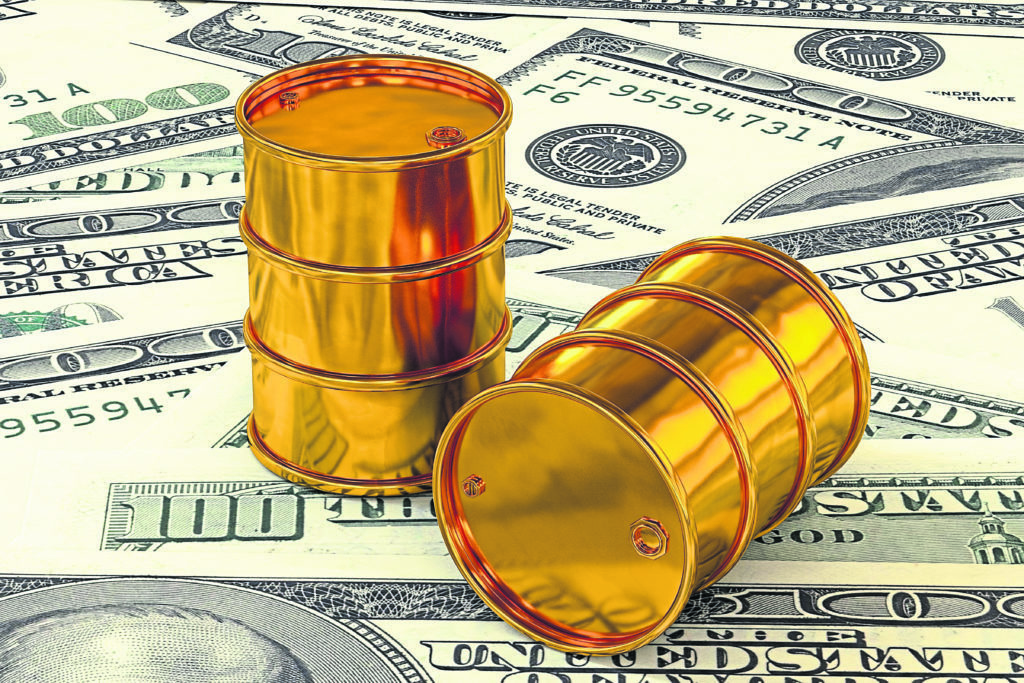
Oil in London extended gains after the longest quarterly rally in a decade as a slowdown in American drilling added to supply risks while the U.S. and Saudi Arabia discussed market stability.
Brent crude rose as much as 0.7 percent, after front-month futures climbed for a fifth straight quarter. As concerns over a global crunch due to the loss of Iranian oil mount, President Donald Trump and King Salman bin Abdulaziz of Saudi Arabia discussed efforts to maintain supplies. Meanwhile, the number of working oil rigs in the U.S. dropped for a second week, signaling that American output may also be slowing.
Oil has rallied to levels last seen in 2014 as supply disruptions from Iran to Venezuela continued to fracture the global market. Top traders forecast crude above $100, while speculation that backup supplies are scarce is keeping investors nervous before American sanctions on the Persian Gulf state due next month. Still, BP Plc has cautioned that a rally may not be sustainable as escalating trade tensions between the U.S. and China could hurt demand.
“In the short term, it’s very clear that the risks to oil are to the upside,” said Wayne Gordon, Singapore-based executive director for commodities and foreign exchange at UBS Group AG’s wealth management unit. “We’re in a supply-constrained market now, for at least the next quarter into 2019. Any geopolitical tension that we don’t foresee coming, with such low spare capacity, is the thing that would push oil to $100 a barrel,” he said in a Bloomberg TV interview.
Brent for December settlement increased as much as 59 cents to $83.32 a barrel on the ICE Futures Europe exchange and was at $83.12 at 2:30 p.m. in Singapore. The November contract, which expired on Friday, settled 1.2 percent higher. Front-month futures rose 4.1 percent last quarter. The global benchmark crude traded at a $9.81 premium to West Texas Intermediate.
WTI for November delivery traded at $73.48 a barrel on the New York Mercantile Exchange, up 23 cents. The contract climbed $1.13, or 1.6 percent, on Friday. Total volume traded was about 49 percent below the 100-day average.
Following the U.S. president’s latest criticism of the Organization of Petroleum Exporting Countries over high prices, Trump and the Saudi king talked on the phone Saturday about a strategic partnership between the two nations and the growth of the global economy, Al Arabiya TV reported, without providing more details. The White House said “issues of regional concern” were discussed.
In the U.S., working rigs targeting oil fell by three to 863 last week, according to data released by Baker Hughes Friday. The tally in the shale-rich Permian Basin of West Texas and New Mexico, dropped by two to 486.
Other oil-market news: Hedge funds’ net-long position — the difference between bets on higher prices and wagers on a drop — in Brent rose 6.1 percent to 496,343 contracts for the week ended Sept. 25, the highest since late May, ICE Futures Europe data show. Analysts at banks including Goldman Sachs Group Inc. and JPMorgan Chase & Co. are forecasting a turnaround in commodities as growth in top economies stays strong and signs of tight supplies emerge in some markets. Investors aren’t yet sharing their enthusiasm. Gasoline futures in New York traded 0.3 percent lower on Monday after posting the longest streak of weekly gains since April. Crude futures on the Shanghai International Energy Exchange didn’t trade Monday due to Chinese public holiday. They jumped 5.9 percent last week.